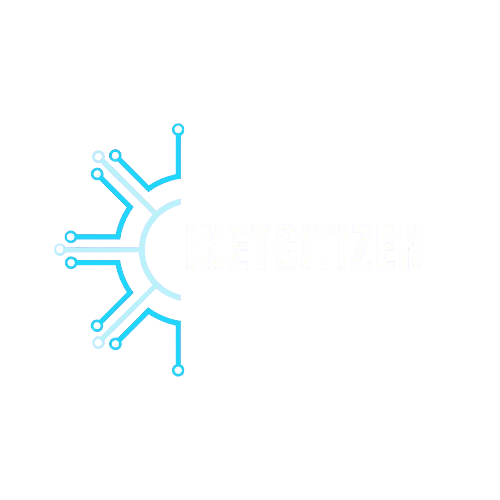In the world of sales, success depends not just on the quality of your product or service but on the people who drive the sales process. Two roles that are crucial in achieving high conversion rates are the setter and the closer. While both positions work toward the same goal—revenue generation—their responsibilities, skill sets, and approaches differ significantly. Understanding the distinction between a setter and a closer can help sales teams operate more efficiently, ensure proper lead handling, and maximize results.
Defining the Roles: Setter vs Closer
A setter is typically responsible for initiating contact with potential customers. Their primary job is to identify leads, qualify them, and schedule appointments or demos for the closers to handle. Setters excel in research, communication, and initial relationship-building. They are often the first human touchpoint a prospect experiences, so making a strong impression is critical. On the other hand, a closer takes the leads handed off by the setter and works to finalize the deal. Closers focus on negotiation, handling objections, and converting interested prospects into paying clients. While setters are measured by the quality and quantity of appointments or qualified leads, closers are evaluated based on the revenue they generate and deals they successfully close. The synergy between setters and closers is what separates high-performing sales teams from average ones.
The Sales Process Flow: How Setters and Closers Work Together
The sales funnel starts with lead generation and ends with closing the deal, and this is where setters and closers play distinct but complementary roles. Setters typically engage in initial outreach, which may include cold calls, emails, or social media interactions. Their role is to determine which leads are worth pursuing and which are unlikely to convert. Once the lead is qualified, setters pass the information to the closers, who then craft personalized strategies to finalize the sale. A smooth transition between setter and closer is critical. Miscommunication at this stage can result in lost opportunities or frustrated prospects. By working together efficiently, setters ensure closers focus on high-potential leads, while closers ensure that leads are nurtured effectively and converted into revenue. This teamwork is the backbone of a successful sales organization.
Skills and Traits of an Effective Setter
Setters need a unique set of skills that blend persistence with interpersonal communication. They must have excellent listening skills to identify customer pain points and gauge interest levels. Strong organizational skills are essential to manage multiple leads simultaneously without losing track of follow-ups. Setters also need a high level of adaptability to adjust their approach depending on the prospect’s personality and needs. They should be confident in their ability to make first impressions, as this can set the tone for the entire sales process. Emotional intelligence is critical, allowing setters to understand the prospect’s mood, objections, and motivations. In short, a skilled setter can create opportunities where others see dead ends, making them a vital component of the sales team.
Skills and Traits of an Effective Closer
Closers are the sales professionals who bring deals to fruition. They require advanced negotiation skills and the ability to manage objections gracefully. Unlike setters, closers must possess deep product knowledge to answer questions and provide compelling solutions that resonate with the prospect. A closer needs patience and strategic thinking to navigate complex deals that may take weeks or months to finalize. Confidence is essential, as prospects often rely on the closer’s guidance to make a purchase decision. Top closers also demonstrate a high degree of resilience, as rejection is a regular part of the role. By combining persuasion, knowledge, and empathy, closers turn qualified leads into profitable customers.
Common Mistakes and Challenges in the Setter vs Closer Dynamic
Even experienced sales teams encounter challenges in the setter-closer relationship. One common issue is poor communication between team members, leading to misaligned expectations and lost leads. Another challenge is inadequate lead qualification, which can result in closers wasting time on prospects who are unlikely to buy. Setting unrealistic quotas for either setters or closers can also create unnecessary stress and hinder performance. Differences in personality or working style between team members may lead to friction, affecting overall productivity. Additionally, lack of proper training or understanding of each role’s importance can cause inefficiencies. Addressing these challenges proactively is key to maximizing the effectiveness of both setters and closers.
Tools and Technology That Boost Setter and Closer Performance
Modern sales teams rely on technology to streamline workflows and improve efficiency. Customer Relationship Management (CRM) systems are essential for tracking interactions and storing lead information for easy access by both setters and closers. Automation tools can handle repetitive tasks, such as follow-up emails and scheduling, freeing up time for more strategic activities. Analytics tools allow managers to measure conversion rates, response times, and overall performance, enabling continuous optimization. Lead scoring and tracking systems help setters prioritize high-potential prospects for closers. Collaboration platforms facilitate real-time communication between setters and closers, ensuring no lead falls through the cracks. By leveraging the right tools, sales teams can maintain high levels of productivity and ensure a smooth lead-to-sale process.
Career Path Insights: Choosing Between Becoming a Setter or Closer
For individuals exploring careers in sales, deciding between becoming a setter or a closer requires careful consideration of personal strengths and career goals. Setters often enjoy the thrill of prospecting, networking, and initiating conversations. Their earning potential is generally based on volume and quality of leads, sometimes supplemented with bonuses for successful handoffs. Closers, however, tend to earn more through commission-based structures tied directly to revenue, making this role attractive for those comfortable with high-stakes negotiations. Both paths offer opportunities for advancement into sales management or executive roles. Understanding the demands and rewards of each role can help aspiring sales professionals choose the path that aligns with their skills and long-term ambitions.
Optimizing Your Team: Best Practices for Leveraging Setters and Closers
A high-performing sales team requires strategic alignment between setters and closers. Clear communication and well-defined processes ensure that leads are properly managed from initial contact to final sale. Incentive structures can motivate both roles, rewarding setters for quality leads and closers for successful conversions. Regular training programs help team members refine their skills and stay updated on industry trends. Team-building exercises can enhance collaboration and minimize friction. Managers should also monitor performance metrics closely, adjusting strategies as needed to maintain efficiency. By creating a cohesive, goal-oriented environment, businesses can fully leverage the strengths of both setters and closers.
Frequently Asked Questions (FAQ)
What is the main difference between a setter and a closer?
A setter primarily focuses on lead generation and qualification, while a closer focuses on finalizing deals and generating revenue.
Can one person perform both roles effectively?
While some individuals can handle both roles, it is challenging to maintain high performance in both areas due to differing skill sets and responsibilities.
How do setters impact a closer’s success?
Setters provide high-quality leads and initial rapport, which makes the closer’s job more efficient and increases the likelihood of conversions.
What industries rely heavily on setters and closers?
Industries like real estate, high-ticket sales, SaaS, and B2B services often have distinct setter and closer roles to maximize sales efficiency.
Which role typically earns more in sales teams?
Closers usually have higher earning potential due to commissions tied directly to revenue, although setters can also earn well depending on the bonus structure.
Takeaway:
The distinction between setter vs closer is more than a matter of titles—it’s a strategic framework for optimizing sales performance. Setters lay the foundation by qualifying and preparing leads, while closers turn those opportunities into revenue. Teams that understand, respect, and align these roles can achieve higher conversion rates, reduce inefficiencies, and foster a collaborative environment where both roles thrive. Recognizing the unique strengths and contributions of each position is key to building a truly high-performing sales operation.











